what writing/thinking skills does brochure writing help a student to fine-tune?
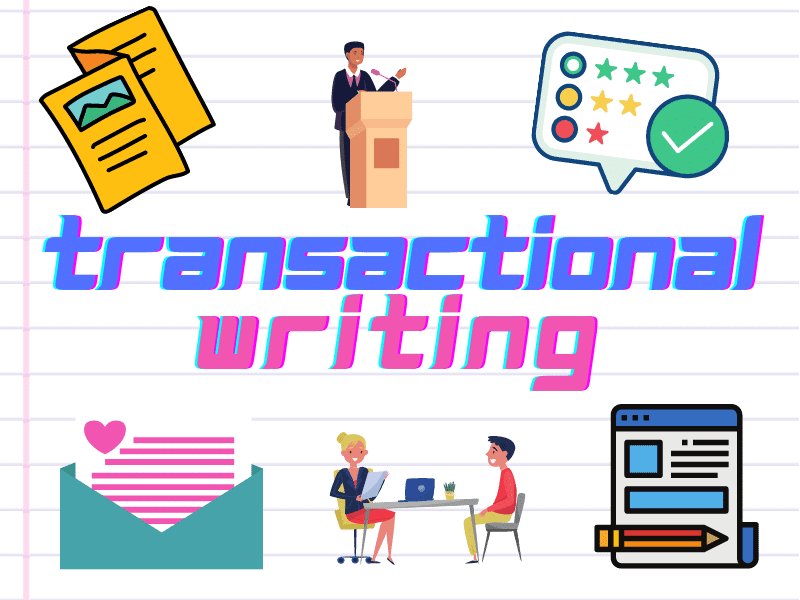
WHAT IS TRANSACTIONAL WRITING?
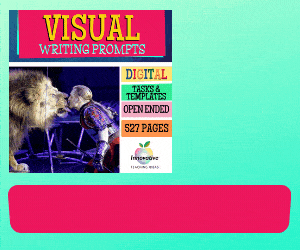
Transactional writing is an umbrella term that covers many different nonfiction writing genres.
The purpose of each transactional writing text blazon is to communicate ideas and information to others.
The purpose of a text can be defined as:
- To persuade
- To fence
- To advise
- To inform.
Sometimes ii or more of these purposes will be combined in a single text type.
101 DIGITAL & PRINT GRAPHIC ORGANIZERS FOR ALL CURRICULUM AREAS
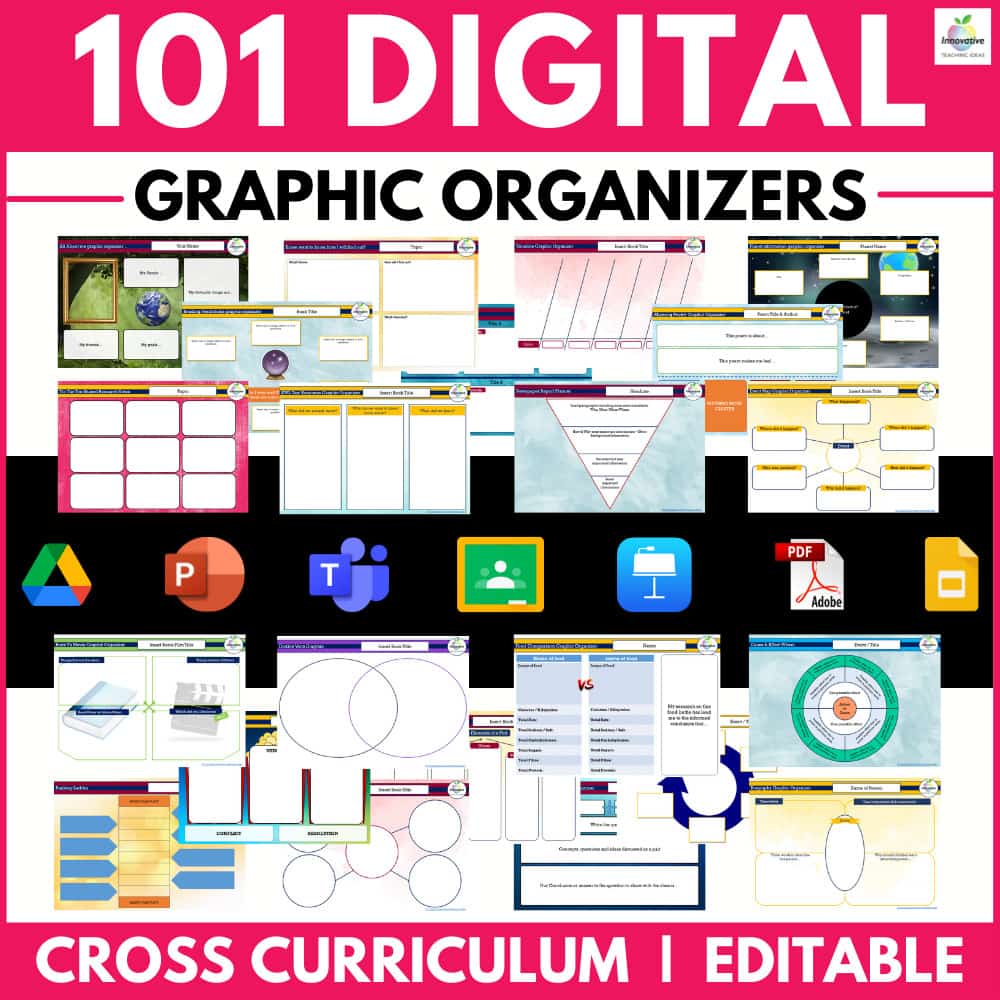
Introduce your students to 21st century learning with this GROWING BUNDLE OF 101 EDITABLE & PRINTABLE GRAPHIC ORGANIZERS. ✌NO PREP REQUIRED!!!✌ Go paperless, and let your students limited their knowledge and creativity through the power of technology and collaboration inside and outside the classroom with ease.
Whilst y'all don't accept to take a 1:1 or BYOD classroom to benefit from this packet, information technology has been purpose-built to deliver through platforms such as ✔ GOOGLE CLASSROOM, ✔ Part 365, ✔ or any Cloud-BASED LEARNING PLATFORM.
WHAT ARE THE TRANSACTIONAL TEXT TYPES?
Any nonfiction writing genre that sets out to persuade, argue, advise, or inform tin can be classified as a transactional text type. By and large, they tin can all be grouped loosely nether one of the following types:
- Article (Read our in-depth guide to writing an article here)
- Leaflet
- Letter (Read our in-depth guide to letter writing hither)
- Review (Read our in-depth guide to writing a volume review here)
- Speech
Each of these genres (and subsequent sub-genres) will follow specific conventions of language and structure.
What Nosotros'll Wait at in this Article
In this article, we'll look at each of these transactional text types in more detail, as well as some other text types that don't sit down comfortably in whatsoever of the v broad genres listed in a higher place.
We'll provide you with all the tools required to aid students confidently approach writing any piece of transactional writing.
We'll examine what students need to consider before they fifty-fifty begin putting pen to newspaper, breaking downward each transactional writing genre into the specific criteria of linguistic communication and structure.
Finally, we'll provide some tools, tips, and techniques students tin can use to bring polish to their transactional writing and to assist them accomplish their text's purpose.
HOW TO Go READY TO WRITE A TRANSACTIONAL TEXT
Every bit with any writing task, training is key. Luckily, there's a helpful acronym we can learn to keep the essential elements of transactional writing preparation clear in our minds: GAPS
Before offset to write, students should fill up in the GAPS by answering the following questions prompted by each letter in this acronym.
Let's take a expect:
Genre – What type of text are yous being asked to write? What are the features of that genre?
Audience – Who are you existence asked to write for? Is it an individual or a grouping?
Purpose – What are you trying to achieve in the text? Persuade, debate, advise, or inform?
Style – Is the text formal or informal? Relaxed or serious in tone? Elementary or complex?
Usually, these questions can be easily answered by a close read of the question or writing prompt.
In instances where the students accept freer rein on what they write, they need to ensure that they have answered these questions conspicuously before get-go the writing process.
Failing to respond these questions definitively before starting to write will all but ensure the writing will lack clarity of purpose.
TRANSACTIONAL WRITING GENRES AND THEIR CRITERIA
One time a student has determined which writing genre they are creating, they need to ensure they have a business firm grasp on the features of that genre.
Below, nosotros'll have a brief look at some of the main criteria of each of the most common transactional writing genres. At that place isn't space to cover each genre in particular here as that'd require a complete dedicated article for each.
Luckily though, you lot'll notice comprehensive (and wonderfully written) articles on each writing genre on this very site!
That said, let'due south gain a cursory overview of some of the main criteria of the about mutual transactional text types.
1. HOW TO WRITE AN Commodity
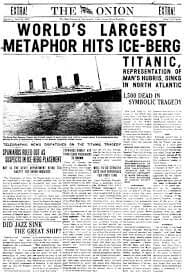
The term 'article' covers a lot of ground here. Nosotros can await to find articles in magazines, newspapers, and websites. We can also consider many forms of essays, such every bit persuasive essays for example, every bit articles.
Construction OF AN Article:
Articles are unremarkably long-course pieces of prose writing on a specific topic. They can be balanced in their outlook considering many points of view, or they tin can present a very subjective stance on the topic existence written nearly.
The subjects that articles tin explore are virtually inexhaustible. Anything you can class an opinion on could brand for the bailiwick of an commodity. Some common topics for articles include:
- Sport
- Travel
- Music
- Amusement
- Celebrities
- News
- Electric current affairs
- Hobbies
- History
Articles tend to follow a basic 3-function structure of introduction, trunk paragraphs, and determination.
The introduction tries to grab the reader's attention and commonly outlines the main betoken of the article.
A series of trunk paragraphs usually follows that provides more than detail on each of the main points covered in the article.
A terminal concluding paragraph then brings information technology all together at the stop.
Linguistic communication OF AN ARTICLE:
To decide on the type of language to be used in an article, the author will need to have get-go identified the audition and purpose of the text.
Regardless of which language annals is used, it should be suited to the background of the target reader in terms of complexity and word selection.
Words should also be called to ensure the purpose of the article is accomplished. For example, where an article is intended to be persuasive, emotional language may be selected. Whereas in an bookish article on a historical topic, detached language devoid of emotional color may be more appropriate.
In brief:
- Heading and subheadings
- Attention grabber or 'hook'
- Introduction answering who, what, when, where, why, and how?
- Trunk paragraphs
- Conclusion
- May comprise pictures with captions
two. HOW TO WRITE A LEAFLET

Standard leaflets are fabricated by folding a canvass of paper to create two, 3, or more than panels. They are often colorful and are commonly distributed for costless to provide information mostly on goods or services.
Construction OF A LEAFLET:
In leaflets, the layout and organization of the text are especially important. Usually, they're printed on folded pieces of newspaper and card which take implications for how the information in a leaflet is presented.
Leaflets vary widely according to their purpose and the audition they are aimed at. Ordinarily, they will employ subheadings to bully issue to guide the reader's center through the various sections of information.
Also, information is frequently organized using bullet points and numbers to make instructions, for case, easier to follow.
Language OF A LEAFLET:
When leaflets provide instructions, they'll oftentimes utilize imperatives and the personal pronoun 'yous'.
As always, the language used will exist suited to the audience. Where the audience is wide and varied, say, for a tourist attraction, the language will be simple and straightforward to make the data in the leaflet accessible to the widest possible audition.
The tone is often enthusiastic and reassuring, to inspire confidence in the data it contains.
LEAFLET WRITING KEY POINTS
- Like shooting fish in a barrel to read with heading and subheadings
- A colorful and assuming presentation style
- Makes an offer of production or service (or provides information)
- Oftentimes uses persuasive linguistic communication
- Eye-catching
- Use of bullet points
- Brusk, snappy sentences
- Uses pictures and photographs
- May comprise details on directions, map, opening times, cost, phone no., etc.
3. Letter WRITING
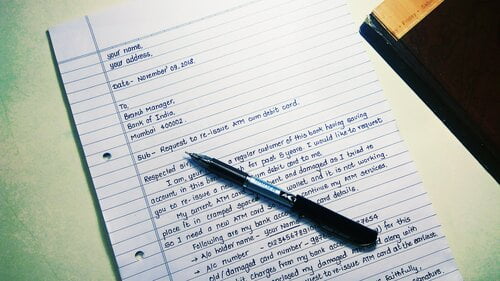
A letter is a written course of advice usually intended to be read by an private or a small group of people. Only very rarely is it intended to be read by a large grouping of people, in which instance it is ordinarily referred to as an 'open letter of the alphabet'.
While traditionally messages were written by paw on newspaper and delivered via the mail, today technology has given united states many more than options for personal communication including email, text messages, and diverse other forms of digital messaging.
STRUCTURE OF A LETTER:
Upward until recently, letter writing was normally a fairly formal affair. At that place are standardized formulas for opening and closing letters which are yet quite common. For example:
● If a letter of the alphabet opens with Love Sir or Dearest Madam (i.e. the name is unknown) information technology ends with Yours Faithfully
● If it opens with Dear Mr. Smith or Dear Mrs. Smith (i.e. the name is known) it ends Yours Sincerely.
And while these formal conventions can still apply, some types of text that we can group under the term 'letter' are much less formal in their manner. Invitations and e-mail are ii prominent examples that employ a much looser approach to structure.
LANGUAGE OF A LETTER:
The language used in any type of letter will depend greatly on the audience it is intended for.
For case, while formal types of letters, such as a cover alphabetic character as office of a job awarding, will accept a very professional tone, an invitation to a birthday party volition likely have a warm and friendly tone.
Emails are used for a wide variety of purposes these days, and fifty-fifty though they can still be used in some more formal blazon contexts, in full general, they are much more conversational in tone than letters.
Letter WRITING Cardinal POINTS:
- For formal letters, your address and the appointment in the top right corner and recipient's address to the left
- Opens with an appropriate greeting (east.g. Dear Sir/Madam, Dear Mr. X / Ms. Ten, Hi, etc)
- Main torso paragraphs.
- Ends with appropriate closing (e.g. Yours Faithfully, Yours Sincerely, Take Care, etc)
4. HOW TO WRITE A REVIEW

Traditionally, when nosotros remember of reviews many of us think of book and movie reviews. There are, of course, many other types of reviews to consider.
These days people read and write reviews on almost any production or service, from hotels to restaurants. For example, we might read a review of a theater show before deciding whether to go or a computer game before deciding on buying information technology.
STRUCTURE OF A REVIEW:
Usually, a review will open with a argument about what is being reviewed earlier summing upwardly the writer'south opinion. The remainder of the review will exist dedicated to explaining why the author arrived at the conclusion they arrived at with, of course, close reference to the thing beingness reviewed.
LANGUAGE OF A REVIEW:
When the review is a positive one, the writer will opt for more positive language making for a more than upbeat experience for the reader. The reverse is truthful for negative reviews.
The tone of a review will exist particularly obvious in the choice of adjectives chosen by the writer.
As the review is subtly trying to influence the reader's perception of the matter reviewed, information technology's of import that the reader trusts the writer and this tin be achieved past the writer building rapport with the reader.
One effective way to achieve this is through the use of humor, though whether or not this is appropriate volition depend particularly on the specific purpose of the review and the nature of the intended audience.
Cardinal POINTS OF WRITING A REVIEW
- States what is existence reviewed (book, movie, article, etc)
- Overview of material
- Body paragraphs explore positives and negatives
- The conclusion summarizes and expresses an stance
- Provides either a negative critique or a positive recommendation.
five: HOW TO WRITE A SPEECH

Speeches are made to practice one of four things: to inform, to instruct, to persuade, or to entertain. They are made on all sorts of formal and informal occasions ranging from political entrada speeches to birthday party toasts.
STRUCTURE OF A Oral communication:
Speeches most ofttimes follow a uncomplicated three-part construction:
- An engaging and motivating opening
- Stiff, well-structured arguments
- A powerful and memorable conclusion
Language OF A SPEECH:
A speech should deliver arguments with clarity and consistency. The speaker must be engaging and able to connect with the audition on an emotional level.
Then as non to alienate the audience, information technology is necessary to cull language in tune with the make-upwardly of the audience.
The purpose of many speeches is persuasion so persuasive devices should exist used such every bit rhetorical questions, objection handling, and emotive language.
Primal POINTS OF Speech WRITING
- Opens with a welcoming statement or greeting (Ladies and gentlemen, Dearly beloved, Teachers and classmates, etc)
- Outlines what oral communication will be about (Today, I will speak to you lot about…)
- Torso of spoken communication makes iii or 4 points and expands upon each bespeak
- Arguments handle objections
- Decision summarizing main points
- Possible phone call to activeness at the end
- Thank the audience.
OTHER TRANSACTIONAL TEXTS TO CONSIDER
Again, the criteria above are far from exhaustive and each genre is worth studying in detail before writing – the manufactures on this site are a great place to get-go.
Remember too, the features above are general and each genre has a host of subtypes that have their own specific requirements that may non be listed in the bullet points to a higher place.
Also, while the genre of writing will inform the way and tone of the text, a lot depends on the purpose and the audience. This will be decided by the educatee in the grooming phase by answering the GAPS questions listed earlier in this commodity.
Now, students understand how to prepare to write, how to construction their writing, and which linguistic communication annals to use, it's time to make sure they possess the necessary skills to get the work done.
WHAT Primal SKILLS ARE NEEDED TO WRITE A TRANSACTIONAL TEXT?
Well, every bit discussed already, transactional writing texts encompass a wide range of genres, serving many purposes, and directed towards a variety of audiences.
Therefore, the list of techniques and skills described below will non apply in every single transactional text a student writes.
Once the student has mastered each of the skills and techniques below, they will need to employ their understanding of each writing context to decide which is all-time suited to their current needs.
The acronym AFOREST will help students to retrieve the specific writing techniques.
Let's accept a wait at each in turn:
A – ALLITERATION & APPEAL
Alliteration refers to the repetition of an initial consonant audio in a series of words. Tongue twisters are an easy manner to illustrate the concept, e.yard.,
P eter P iper p icked a p eck of p ickled p epper.
Nosotros often encounter alliteration used in texts that employ headlines as the technique helps grab attention and engage the reader. It can too, of course, be used within the trunk of the text to help draw attention to a concept or thought.
Appeal is a reminder to consider the audience the text is intended to entreatment to, every bit this will profoundly impact the tone of the writing.
It will also inform the pronouns the author chooses to use in their text.
For example, in a speech where the author is direct addressing their audition, they may oftentimes utilize personal pronouns straight addressing the audience such as you lot and we.
For example:
Instead of… "Action must exist taken to prevent this."
The student writes… "We must take action to foreclose this."
F – FACTS
Facts are an important tool of persuasion and can come in many forms. Essentially, facts refer to any verifiably true statement. Statistics are i disarming tool of persuasion to support factual statements.
Whatever guise facts come in, they can exist used to inform or entertain as well equally persuade the reader.
O – Stance
Opinion refers to the sharing of a personal betoken of view. Opinions bring life to a piece of writing.
While it may not be appropriate to express a personal stance in some contexts, many types of transactional text would be incomplete without the inclusion of the writer'south opinion. For example, a persuasive essay or a movie review.
Often, a text volition open with an assertion of the writer's opinion with the rest of the slice focused on supporting that opinion to persuade the reader to share the writer's point of view.
The departure between a statement of fact and i of stance is illustrated in the post-obit two sentences:
Brazilian Jiu Jitsu is a very popular combat sport. (Fact)
Vs.
Brazilian Jiu Jitsu is the greatest of all combat sports. (Opinion)
R – REPETITION & RHETORICAL QUESTIONS
Repetition repeating certain words or phrases in a text is an effective means of highlighting a bulletin or an idea, as well as reinforcing it in the mind of the reader. Repetition tin be used to not only to bring rhythm and a sure poetry to a text, merely it can bring clarity likewise.
For example,
"Mankind must put an cease to war – or state of war volition put an terminate to mankind."
— John F. Kennedy
Rhetorical Questions are questions that are asked, only no reply is expected. Usually, the reply volition be either implied or obvious to the audience. They are frequently used in speeches and persuasive texts such as advertisements.
For examples,
"Why pay more?"
Rhetorical questions are asked for the effect they create, rather than any effort to elicit an answer. They can be a very persuasive tool to have in any writer's armory.
East – Emotive Language & Exaggeration
Emotive Language is a powerful tool of persuasion. Emotive language in a text tin be used to incite stiff feelings in the reader.
Whether these feelings are feelings of joy, sorrow, disgust, or desire, writers often use this type of language to evoke a desired reaction in the reader and incite them to have a particular course of action.
Emotive language is commonly understood in dissimilarity to objective, factual writing. This blazon of linguistic communication makes a contention or argument, but in a manner, that appeals to the reader'south feelings.
For example, if the writer is arguing that there should be no restrictions on business opening hours, they might write the post-obit:
"Forcing businesses to close volition steal money from the pockets of our poorest workers. It volition steal breadstuff from the hungry mouths of our children."
Exaggeration is sometimes known as hyperbole and in this context refers to the making of intentionally over-the-top statements to intensify the touch of an statement.
For example,
Instead of proverb school closures will create issues for students, parents, and teachers alike, we might brand a statement similar:
"School closures will exist the end of the world!"
S – Statistics
Statistics, along with percentages and other numbers, are used equally supporting evidence for facts.
For example,
"The get-go of the week is an extremely stressful time for many people. So much so that the risk of a centre set on for adult men is about 20% greater on Mondays and 15% greater for adult women."
T – The Rule of Threes
Three is the magic number. Our brains love patterns as they help u.s. make significant and aid make that significant memorable. We see information technology in do in many common phrases.
For instance,
"Absurd, calm, collected"
"Blood, sweat and tears"
"Location, location, location"
While cliché should normally be avoided, students can come up with their own patterns following the rules of 3 to make their writing more memorable.
WRITING CHECKLIST & RUBRIC Bundle FOR ALL TEXT TYPES

Transaction Complete
When understood well, the higher up concepts, strategies, and techniques will ensure that pupil writers can confidently and competently produce a strong slice of transactional writing in whatever genre.
As their experience and abilities grow, students will quickly be able to recognize the purpose of whatever writing prompt and accurately assess their prospective audience to help fine-tune their language register.
One time they've selected the appropriate criteria, they'll be able to cull suitable tools and techniques to produce a polished slice of writing that fulfils all intended objectives.
All that's needed at present is practice – and enough of information technology!
OTHER GREAT Articles RELATED TO TRANSACTIONAL WRITING
Content for this page has been written past Shane Mac Donnchaidh. A onetime principal of an international school and university English language lecturer with 15 years of pedagogy and administration experience. Shane'southward latest Book the Consummate Guide to Nonfiction Writing can exist found here. Editing and support for this article have been provided by the literacyideas squad.
Source: https://literacyideas.com/transactional-texts/



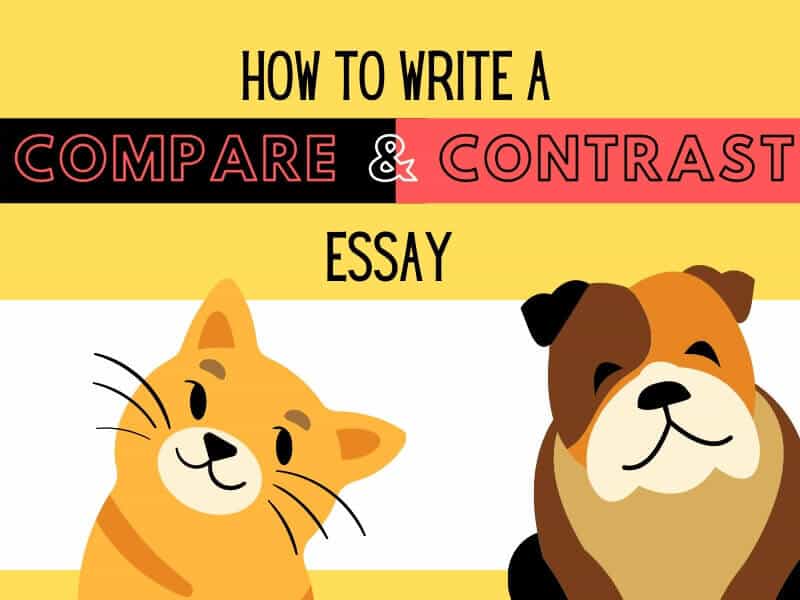
0 Response to "what writing/thinking skills does brochure writing help a student to fine-tune?"
Post a Comment